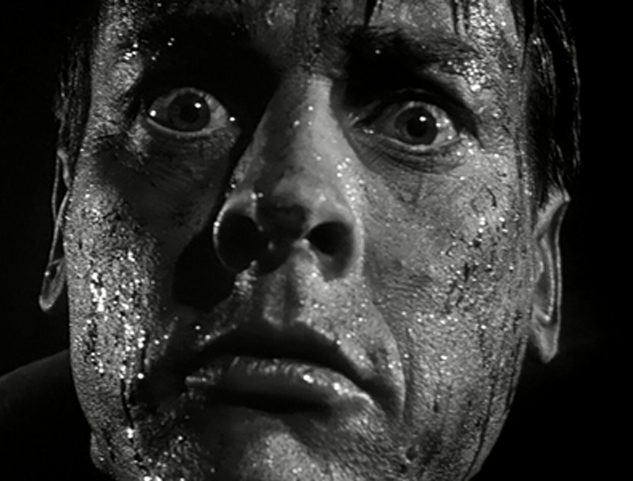Musings on Identity and Reality – Part I
by Mitchell Kaufman, M.D., M3 Health Sciences Contributing Editor,
Board Certified in Neurology with a sub-specialty in Surgery,
Assistant Clinical Professor of Neurology, UCLA Medical School
Contributing author The Atlas of Electroencephalography
 In 1954 two science fiction writers, Philip K. Dick and Jack Finney independently wrote what would become for each of them, landmark stories. What was interesting is that both stories had similar plots. Phil Dick’s story, “The Father Thing” involves a young boy who accidentally sees his own father talking to a clone of himself. Only one of them comes in the house to dinner, and the young boy senses that whatever came into the house was not his actual father. He discovers later with some of his friends that there is an alien, insect-like being that lays life-size cocoons, in which grow duplicates of humans. Then the duplicate confronts its host, kills them and eats them to become them. In Jack Finney’s, “The Body Snatchers”, strange seeds from an extraterrestrial origin fall into a small California town sprouting life-size seed pods, in which grow duplicates of the towns people. As soon as the victim falls asleep, the duplicate absorbs the life of its sleeping host and leaves the victim’s body to turn to dust.
In 1954 two science fiction writers, Philip K. Dick and Jack Finney independently wrote what would become for each of them, landmark stories. What was interesting is that both stories had similar plots. Phil Dick’s story, “The Father Thing” involves a young boy who accidentally sees his own father talking to a clone of himself. Only one of them comes in the house to dinner, and the young boy senses that whatever came into the house was not his actual father. He discovers later with some of his friends that there is an alien, insect-like being that lays life-size cocoons, in which grow duplicates of humans. Then the duplicate confronts its host, kills them and eats them to become them. In Jack Finney’s, “The Body Snatchers”, strange seeds from an extraterrestrial origin fall into a small California town sprouting life-size seed pods, in which grow duplicates of the towns people. As soon as the victim falls asleep, the duplicate absorbs the life of its sleeping host and leaves the victim’s body to turn to dust.
Finney’s story has become such a classic of science fiction and horror, that it has been filmed successfully four times. Still the great classic version is the original 1956 production with Kevin McCarthy and Dana Wynter. As I watched the film the other night, and then re-read the story I realized that one of the greatest fears of all mankind is a natural process that actually takes place in all of us throughout our lives. All of us as human beings are deeply afraid of losing our identity, or more specifically losing that spontaneous self awareness and greater sense of self that we call our conscious identity, or our conscious self, or even our soul.
Neurosciences have come a long way in discovering the workings of the brain and nervous system, but only recently have psychologists and neuroscientists started delving into the area we now call the cognitive sciences, or the study of consciousness. Consciousness theory is just that. Nobody has been able to figure out yet what consciousness really is, how it works or whether its workings actually sit in the brain at all. It is true that the brain has a function in receiving sensory stimulation through the sensory organs; the eyes, the ears, nose and mouth, not to mention the nerve endings throughout our bodies. This information is received and processed by the brain; we can all agree on that. Consciousness, however is something entirely different, and then even different still is our unique “self” experience, which plays a role in consciousness but is in itself separate from and beyond consciousness or any neurological process we understand. Let me repeat this, as even hard-core scientists are not able to clearly define or even describe this “self” experience. It is not consciousness. Consciousness is a process and a state of awareness and a greater awareness of the world around us. Self awareness is part of the process of consciousness, at least in higher beings.
But beyond consciousness, underneath it and far more fundamental is something that science has not yet defined because its very existence is so ethereal and elusive that there is no way yet to conceptualize it. It is the individual spark of self that composes our unique personality, it is the force of our unique individual will that mixes with the brain’s neurochemical soup to join the process of consciousness and then color our behavior and become our personality. Throughout ages philosophers have referred to it, the conscious manifestation of self as the soul. I refer to the conscious manifestation of self as the conscious identity or the conscious self.
I’ll further illustrate with another example. Several years ago the science of cloning cells became a popular topic for science and science fiction. That is, it was a popular topic until people realized the limitations of cloning. If you are cloned, the clone will look identical to you and perhaps have some of your same personality traits. Even if done in a future time when we can transplant some memories (this has already been done with mice), the clone will not be you. That is, you will not wake up in this new body.
The problem with this, is that while the “you” is an unique experience, it may not be unique within you. Every cell in your body has reproduced with new cells and replaced those that have died. You are clearly in many ways, not the same person who was born years ago. Your heart hasn’t stopped beating since before you were born, and yet it is not the same heart. Every cell in the heart muscle has died and been replaced many times. The same goes for the brain and every system in your body. Much like the seed pods from Invasion of the Body Snatchers, new cells have been of our bodies, born to take over your dying cells until your body doesn’t resemble the old body. In the story and in the movie they called it replacement of the body. The term we use for the replacement of our bodies is “growth”. The difference of course is that our unique traits of self are transferred to our new cells and our new bodies, but not exactly. Although we perceive that we have the same continuous thread of self throughout our whole lives, the fact is that our self is also not the same as it was when we were younger. And, as in the movie, “The Invasion of the Body Snatchers” it may well be that this change takes places during sleep. Maybe it doesn’t happen in one night, as in the film, but it may happen a little bit over many nights, over many months or years. Think carefully and you’ll realize that even consciously, you are not the same as you were years ago. Your beliefs, your likes and your dislikes, the things you value, they have all changed over time, and not all of these changes can be explained by environment or external experiences. Yet on a macroscopic level, there is a continuity of a self inside of you, and perhaps the real point is not to obsess over the clinical observations that change is inevitable on every level of nature, but to enjoy the miracle of the experience we call life and celebrate our self.


